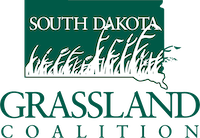UPDATE ON 2022 LANDOWNER PRESCRIBED FIRE WORKSHOPS
Landowner workshop dates are April 27th & 28th at the SDSU Extension Office at Mitchell Tech and June 2nd & 3rd at the SDSU Oak Lake Field Station near Astoria. Contact Jan Rounds at the SDSU Extension office in Watertown for both locations. Janice.rounds@sdstate.edu or 605-882-5140. Registrants will receive more information and details as the burn school dates approach.
This month our discussion shifts to the impact that fire can have on the plant community. I’m going to focus primarily on the impact of fire on desirable and undesirable grasses and flowering plants, saving the topic of woody species for another day.
There are a few general truths about fire as a grassland management tool that are not well understood. Understanding these things better will help the grassland manager make more informed decisions.
The first issue can be the common belief that either all fire is good or that all fire is bad. The truth is that fire is simply a chemical/physical reaction in the form of combustion that has ecological, social, and economic impacts. Fire is neither inherently good nor evil. Fire cannot ‘create’ new plants, rather it can only stimulate or hinder those plants which are already present in the system.
One of my biggest frustrations occurs when an unplanned wildfire event occurs and property is damaged or forage or habitat is lost suddenly or unexpectedly. In these instances, emotions can drive the perception of fire’s impact on the plant community. The pro-fire community often implies that all fire is good because it is an ecological process and the grass will grow back. It is true that the grass does grow back, but the physical damage to property, temporary loss of forage, threat to life, or an unexpected change in the plant community can be real consequences of an unplanned wildfire event.
But, it is also important not to allow emotion to lead to assumptions that the negative impacts of unplanned wildfire events are inherently part of all fires. The truth is quite the opposite. Through planning, a prescribed fire by definition mitigates the negatives while specifically accomplishing goals. Primary goals are often centered on the plant community, either by targeting the enhancement of certain species by hindering others, or both. For example, enhancement of native grasses while discouraging exotic grasses is achievable with proper fire timing and intensity. Secondary goals, such as using the post-fire plants for grazing, seed production, or wildlife habitat can then be pursued. Whether planned goals are achieved or not depends on the correct use of the fire tool in regard to timing, intensity, frequency, and duration (I’ll expand on these factors in my next article in the May issue).
Returning to our question of ‘how will fire affect my plant community?’ is dependent on the composition of the current plant community, both above and below ground. A virgin native grassland pasture that has an intact plant community and a healthy seed bank will often respond vigorously and vibrantly to a planned burn. These communities and soils are incredibly resilient to fire at any time and will rebound if given the opportunity for post-burn recovery. Where exotic plants do occur, burn timing, intensity, and duration become more important as the fire can either suppress or stimulate various components of the plant community.
Source: SDGC Newsletter
